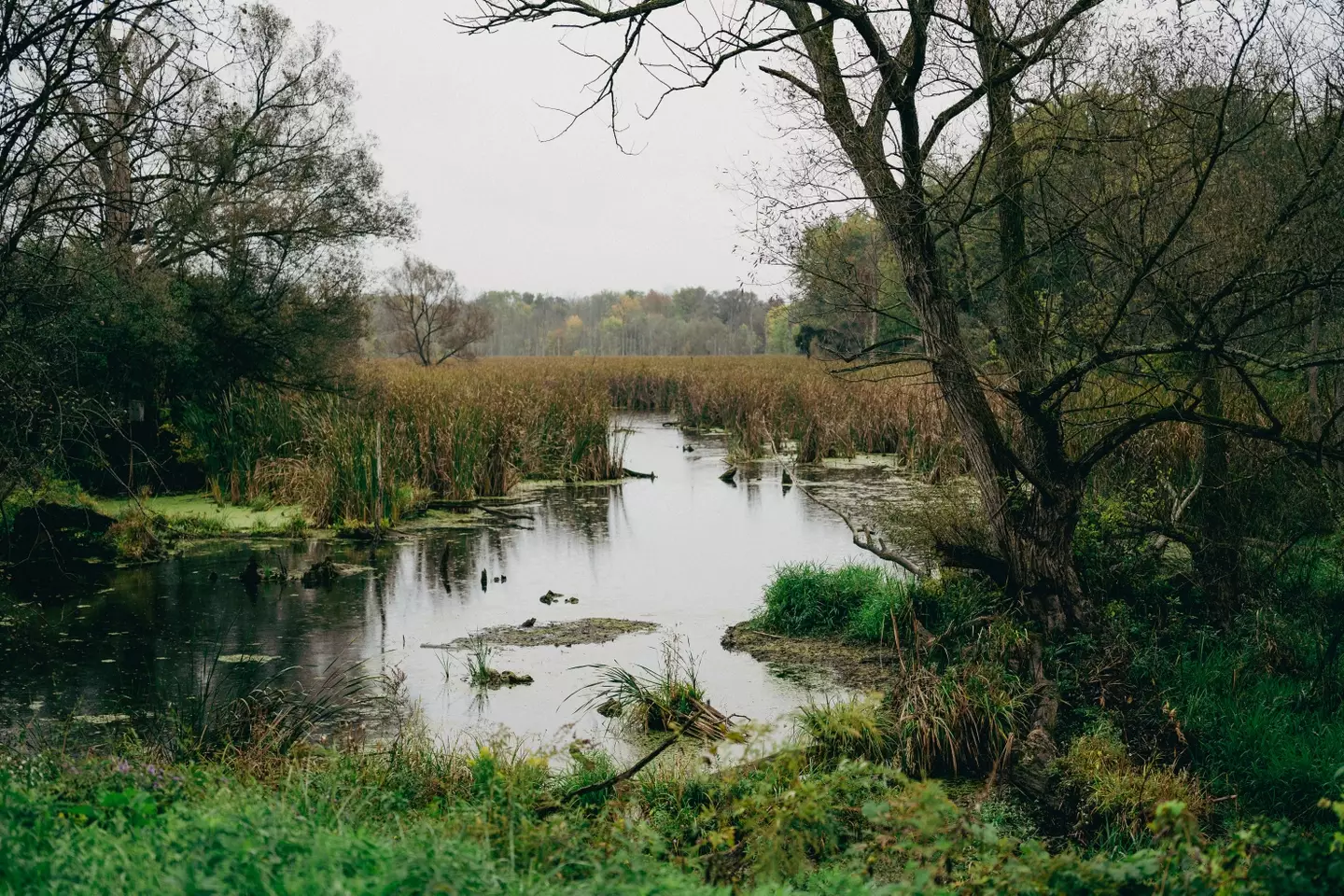
A who man confessed to murdering his wife was left stunned after the body later turned out to be a historical victim, dating back 1,600 years.
At an idyllic cottage in Cheshire, one horrific crime would come to light almost two decades later as police stumbled upon an unimaginable find within a 11,000-year-old peat bog.
When Peter Reyn-Bardt, an airline employee met travel enthusiast and portrait artist, Malika de Fernandez in 1959, the two fell in love.
Advert
The pair had only met for two hours before Reyn-Bardt asked Fernandez to marry him, exchanging vows just four days later.
Though the two initially fell head over heels for each other, it took little over a couple of months before their marriage broke down. This led Fernandez to start travelling again, this time using her husband's airline travel discount while he remained back home.

Who would have known that two years later, Fernandez would be nowhere in sight, and police investigations would amount to nothing for twenty years.
Advert
That was until part of a body was found within a peat bog close to where Reyn-Bardt lived.
Despite his property and garden being searched for his wife’s remains, the police were stumped for evidence to connect him to her murder and sudden disappearance.
As a peat bog is formed through the decomposition of organic matter, like plants and moss, it can create conditions to preserve a body for centuries.
Sphagnum moss, if left in wetlands for enough time for the water to form a bog with a temperature lower than 4°C, will form acids which could turn a thousand-year-old corpse into something that looked like a recent death.
Advert
So, when the head of a woman was discovered by workers Andy Mould and Stephen Dooley in the Lindow Moss peat bog in 1983, forensics and police thought that the woman must have been aged between 30 and 50 years old, due to her incredible preservation.
This is because acidic bog water doesn’t decay human tissues, instead it turns skin to leather and hair red as everything else dissolves, according to the Science History Institute.

This is when Reyn-Bardt became suspect number one and was quickly apprehended for the murder of his wife, then believing that this must be the body of Fernandez.
Advert
According to police, it wasn’t hard to find Reyn-Bardt as he had only been released from prison after serving time for a series of sex crimes against children.
During the initial questioning, he told police: “It has been so long, I thought I would never be found out.”
He went on to explain that he murdered his wife due to her threatening to oust him as a gay man, which wasn’t legal in England at the time, in return for cash.
“Something just boiled over inside me,” Reyn-Bardt admitted.
Advert
He told the court that he had grabbed her and began shaking her, and didn't realise he had killed her until he stopped.
“I was terrified and could not think clearly. The only thing that came to mind was to hide her," he said.

Reyn-Bardt went on to confess that he dismembered her body with an axe, and tried to burn her remains, but when that failed, he threw her into the peat bog near his cottage.
But Detective Inspector George Abbott wasn’t so sure that they had the right person as they didn’t have the rest of her body. So, he sent the skull to Oxford University for more tests which concluded that the skull dated back to Roman times, thanks to carbon dating.
During the murder trial, prosecutor Martin Thomas told the court: "The skull had been preserved in the peat bog for over 16 centuries and obviously has nothing to do with Malika Reyn-Bardt.
"But the supreme irony is this: its discovery led directly to the arrest of the defendant and to his detailed confession."
Though Reyn-Bardt tried to take back his confession after hearing the news, it was too late and 3 hours later, the jury found him guilty of murder.
He spent the rest of his life in prison.
Fernandez's body still remains unfound to this day.
Featured Image Credit: Getty/ Maryland State Medical Examiners Office Morgue/ Stock photoTopics: True Crime, UK News, News, Crime
